Home / Pink Floyd Timeline / 1943-1968 Syd Barrett’s Pink Floyd
Pink Floyd Timeline : 1943, 1944, 1946, 1961, 1962, 1963, 1964, 1965, 1966, 1967, 1968
Pink Floyd’s history is a colourful, innovative and sometimes dark affair spanning many decades of amazing albums, live shows, photography and more. It is a difficult task, of course, to boil down such an immense time period into a timeline. But we shall try. If you would like to suggest an addition to the timeline, get in touch.
1940s Pink Floyd Band Members Are Born
The core band members in Pink Floyd are born in the 1940s, in Southern England, except Nick Mason who was born in the midlands.
Timeline: 1943
28 July 1943

Richard Wright is Born
Richard Wright (Richard William Wright): Born on July 28, 1943, in Hatch End, London, England. Wright studied at the London College of Music and later joined the London Polytechnic, where he met Waters and Mason.
Richard Wright Biography, Richard Wright Photos
6th September 1943

Roger Waters is Born
Roger Waters (George Roger Waters): Born on September 6, 1943, in Great Bookham, Surrey, England. Waters grew up in Cambridge and later moved to London, where he met the other band members while studying architecture at the London Polytechnic.
Roger Waters Biography, Roger Waters Photos
Timeline: 1944
27th January 1944

Nick Mason Born
Nick Mason (Nicholas Berkeley Mason): Born on January 27, 1944, in Birmingham, England. Mason studied architecture at the London Polytechnic, where he met Waters, Wright, and Barrett.
Nick Mason Biography, Nick Mason Photos
18th February 1944
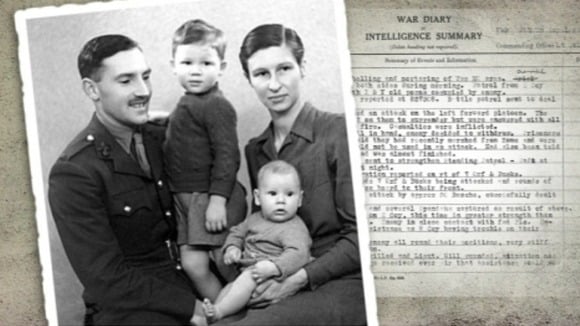
Eric Fletcher Waters Dies
18th February 1944 Eric Fletcher Waters dies at Anzio and would inspire his son, Roger Waters, in his song writing many years later.
Read about the memorial Roger Waters opened in Italy for his late father in 2014,
Timeline: 1946
6th January 1946

Syd Barrett is Born
Syd Barrett (Roger Keith Barrett): Born on January 6, 1946, in Cambridge, England. Barrett was the original frontman and primary songwriter of Pink Floyd. He grew up in Cambridge and later moved to London to study at the Camberwell College of Arts.
Syd Barrett Biography, Syd Barrett Photos. See lots of photos of Syd Barrett growing up with his family
6th March 1946

David Gilmour is Born
David Jon Gilmour. Born on March 6, 1946, in Cambridge, England. Unlike the other members, Gilmour did not meet the rest of Pink Floyd in college. He grew up in Cambridge and had known Syd Barrett from his teenage years, as they attended the same school, though they weren’t close friends at the time.
David Gilmour Biography, David Gilmour Photos
1960s Several college bands later, Pink Floyd is Formed
Various members of Pink Floyd would be in different bands in the early 1960s before The Pink Floyd was formed. Read our comprehensive research article about Pink Floyd Band Member’s bands before Pink Floyd. However, they are documented in this timeline below.
Timeline: 1961
1961
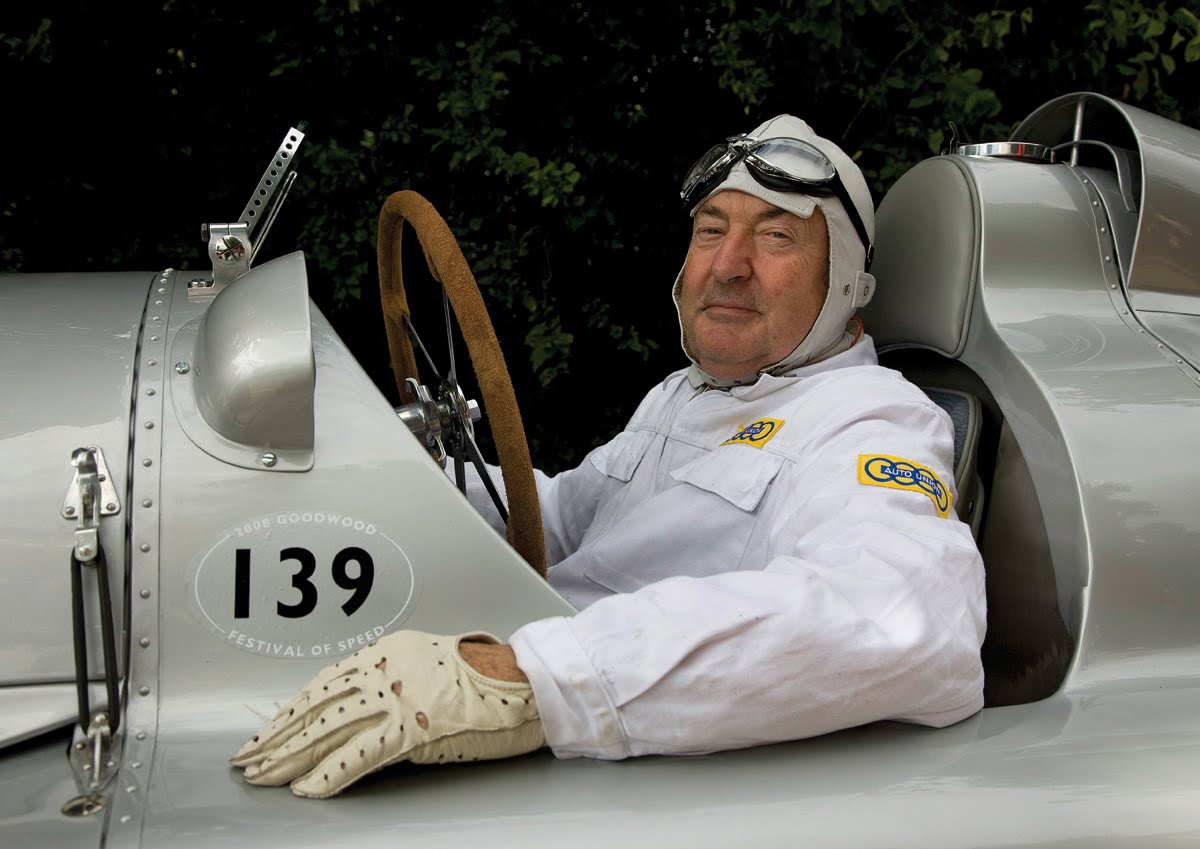
Nick Mason Passes Driving Test!
Nick was greatly inspired by his father’s car collection and passed his driving test in 1961. Photo is obviously from much later on at Goodwood Festival of Speed.
Timeline: 1962
Spring 1962

Geoff Mott & The Mottoes
(At 16 years of age, Syd joined his first band, Geoff Mott And The Mottoes.) Geoff Mott was a gangly, bespectacled, carrot-haired youth who had been expelled from The County for general unruliness prior to setting up his own rock ‘n’ roll band. Mott’s rebellious image and comparative experience (he was 19, several years senior to the rest of the crowd) made him a minor celebrity among the town’s fledgling rockers . He was the obvious frontman. Clive Welham was the drummer and 18-year-old Roger Waters, son of Syd’s teacher Mary, was roped in on bass. […]
Geoff Mott And The Mottoes were, like dozens of Cambridge groups, formed purely for fun and without pretensions of stardom. The band’s history consists of a solitary gig at a CND meeting in a local hall, the type of occasion, admits Mott, where they could not put a foot wrong.
With their flamboyant leader at his exuberant best, The Mottoes doggedly ran through a string of Buddy Holly and Eddie Cochran numbers, spurred on by the generous applause of their captive audience.
“Syd wasn’t a bad rhythm guitarist,” says Mott. “It was nice to hear someone who could play as opposed to thumping around.”
The Mottoes CND triumph was never to be repeated, although they talked enthusiastically about another gig. Mott had a full-time job and was already in a semi-pro band, while Waters was on the verge of moving up to London.
The band played only one gig, after a CND march in Cambridge, at Friends Meeting House on 11th March 1962.
March 1962

The Ramblers feat. David Gilmour
David Gilmour, renowned for his later work as Pink Floyd Guitarist, was briefly involved with a band called The Ramblers during his early years in Cambridge, around 1962 and 1963. This stint with The Ramblers marked one of Gilmour’s first forays into the music scene, although he only performed a few shows with them. His time with The Ramblers was a stepping stone in his musical career, leading him to more significant roles in other bands, such as Chris Ian & The Newcomers and later just The Newcomers, following Chris Ian’s departure. They performed around Cambridge and Royston once. Note Pic doesn’t feature David Gilmour.
September 1962

Regent Street Polytechnic
September 1962 Roger Waters, Richard Wright and Nick Mason start their attendance at Regent Street Polytechnic in London. They are all studying architecture. They all start playing music together and are joined by various temporary members. Bands like The Meggadeaths and The Abdabs emerge. Syd Barrett, Roger’s childhood friend, would arrive at Camberwell School of Art the following year and things would get moving for what would become Pink Floyd.
Timeline: 1963
Jan-Oct 1963
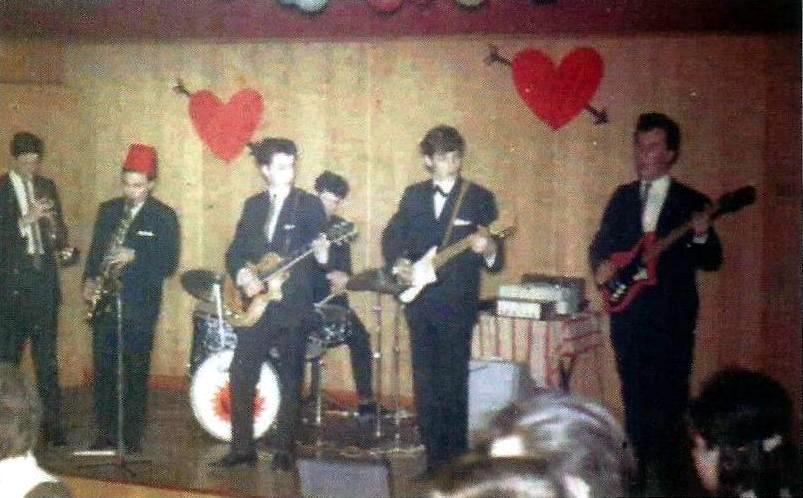
Chris Ian & The Newcomers
January-March David Gilmour is in a band called Chris Ian & The Newcomers which played a few gigs around Cambridge.
The picture shows The Newcomers performing at a Valentine’s party, February 1963. From left: Dick Fletcher, Dave Thaxter, Johnny Barnes, Chris Ian(Culpin), David Gilmour, Roger Bibby. © Dave Thaxter.
Additional Sources : https://more-relics.tumblr.com –
Autumn 1963
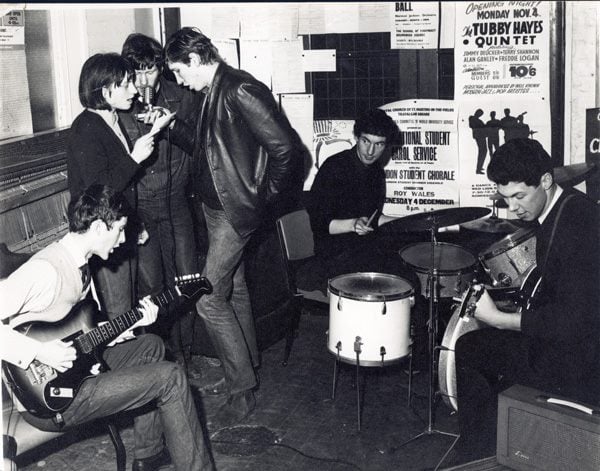
Sigma Six
Autumn 1963 Sigma Six was put together by Clive Metcalf whilst Nick Mason, Roger Waters and Richard Wright were attending Regent Street Polytechnic. Nick and Roger were on their usual drums and guitar respectively. But Rick Wright was on guitar too in between piano, organ and brass!
In the picture, The Sigma 6, Clive Metcalfe, Sheila Noble, Keith Noble, Roger & Nick Mason, and unknown temporary guitarist, in the student Common Room at the Regent Street Poly, where we rehearsed. My drum kit had now upgraded to a Premier. [Pic: 1963 Pink Floyd Music Archive]
Sep 1963

Syd Barrett starts Foundation year oat Cambridge College of Art
Painting titled Lions by Syd Barrett from 1963
Timeline: 1964
July 1964
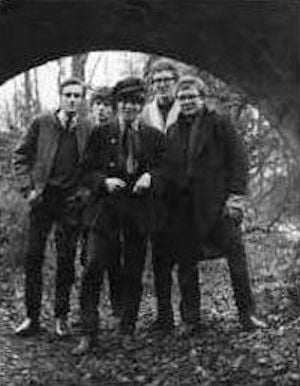
The Hollerin’ Blues
In July 1964, Syd Barrett was a member of the band “Hollerin’ Blues,” showcasing his early musical talents before achieving fame with Pink Floyd. This band, which included Barney Barnes on keyboards and vocals, was one of Barrett’s many pre-Pink Floyd ventures. During this time, Barrett was honing his skills and style, which later contributed significantly to the unique sound of Pink Floyd. His involvement in “Hollerin’ Blues” was a key step in his musical journey, reflecting his penchant for experimentation and a blend of various musical influences.
Band Members:
Barney Barnes on Keyboards, Electric Piano, Vocals
Roger ‘Syd’ Barrett , Guitar
Pete Glass, Harmonica
Steve Pyle on Drums
Ken Waterson on Vocals, Maracas, Harmonica
They would play five concerts in Cambridge in July ending on 25th July 1964 at Beat Nite at the Village Hall in Little Gransden, just outside Cambridge England.
Spring-Summer 1964

The Screaming Abdabs AKA Sigma Six
Sigma Six were mistakenly called The Abdabs (The Screaming Abdabs) due to a falsely attributed name in a newspaper article. For decades after, Pink Floyd historians would incorrectly document this band that didn’t exist. We continue that legacy here.
The band performaned at The Marquee, Soho, London. They played as extras in an unidentified film. The band also played at various private parties but never played any other music venues. They rehearsed at Regent Street Polytechnic often in addition to the flat of Mike Leonard much to the annoyance of the neighbours!
July 1964

Hollerin’ Blues feat. Syd Barrett
July Syd Barrett is now in the Hollerin’ Blues playing guitar, just one of many bands he would be in before achieving fame with Pink Floyd. Check out some of the pre-fame band pictures from Syd’s story. Band members included Barney Barnes on keyboard, electric piano and vocals. Syd Barrett on Guitar. Peter Glass on Harmonica. Steve Pyle on Drums. Ken Waterson on Vocals, maracas and harmonica. They played 5 concerts around Cambridge before disbanding. They became Those Without later.
Note: I think this picture might be from when they returned later as Those Without. See interview with Syd’s first manager on the Atagong webste.
Sep 1964

Syd Barrett starts 3 year Course at Camberwell School of Art in London
Roger Keith ‘Syd’ Barrett began his three-year course at Camberwell School of Art in London in 1964. Prior to this, he had completed a Foundation Year at Cambridge Art School. His initial passion was for painting rather than music, and he was more focused on pursuing a career as an artist at this time. While studying at Camberwell College, Barrett found inspiration in artists like Mark Rothko and Robert Rauschenberg, and he started blending abstract expressionism with his own musical ambitions.
Barrett’s move to London for his art studies marked a significant shift in his life. He transitioned from the more secure environment of Cambridge to the less secure but more artistically vibrant setting of London. This move was a pivotal point in his life, not only for his artistic development but also for his eventual deep dive into the world of music. However, it’s notable that Barrett left Camberwell School of Art in his final year, six months before completing his studies.
Check out Syd Barrett Artwork, Paintings and Letters
October 1964

David Gilmour in Jokers Wild
October 1964 to 1966 David Gilmour is now in Jokers Wild and would release a famous bootleg EP which is available at all good Pink Floyd ROIO websites. You can see lots of photos of Jokers Wild. David Gilmour’s brother Peter Gilmour played bass in the band for a while too.
Autumn 1964

The Spectrum Five
Autumn 1964 The Spectrum Five is basically Pink Floyd. The members are Roger “Syd” Barrett – Vocals, Rhythm Guitar, Bob Klose – Guitar, harmonica, vocals, Nick Mason – Drums, Roger Waters – Bass, vocals and Richard Wright – Keyboards, Vocals.
Winter 1964

Leonard’s Lodgers and The Tea Set
Winter 1964 The Spectrum Five has given way to Leonard’s Lodgers, as Rick Wright had left and Mike Leonard was playing Keyboards and with other Cambridge native Bok Close on guitar. They let Mike in the band because they were renting his flat and making a large amount of terribly loud noise. Mike would, of course, contribute massively to the early light shows at their gigs. His projections would stay with the band until decades later. Chris Dennis also popped up as a vocalist.
Timeline: 1965
2 January 1965

Syd Barrett in Those Without
Syd Barrett performed with Those Without at a wedding reception in Cambridge. This picture from that event shows Syd, Robert Smith – known as Smudge – on rhythm guitar, and Stephen Pyle on drums:
1965

Pink Floyd Is Born out of The Tea Set
Early 1965 The Pink Floyd sound is playing small venues like RAF Uxbridge, The Countdown Club in London, Homerton College in their hometown of Cambridge, England. They would play just 7 events in 1965 just as they are getting going. The concerts were in London and Cambridge.
On return trips to Cambridge Syd began playing guitar with The Hollerin’ Blues, who by 1965 had turned into Those Without. Meanwhile, Roger Waters had formed a band called Sigma 6 with college friends including Richard Wright and Nick Mason. When two of the six left, there was space for Syd to join, along with Rado (‘Bob’) Klose.
Where did the Pink Floyd name come from?
After some personnel and name changes, the band finally settled down into the Barrett/Mason/Waters/Wright lineup in the summer of 1965 under the name of Pink Floyd, suggested by Syd and based on US bluesmen Pink Anderson and Floyd Council. Syd Barrett came up with the name Pink Floyd by combining the surnames of the two blues musicians. They were The Pink Floyd Blues Band first. Roger joked later if would have been unfortunate if they chose the surnames – they would be known as Anderson Council… like a local council authority!
Pink Floyd (alternative known as The Tea Set throughout 1965) was still a part-time band, allowing Syd to take off to France in August with David Gilmour, the pair being briefly detained by the St. Tropez police for busking (playing in the street).
Occasionally, Richard Wright’s future wife Juliette Gale, would also join in on vocals.
Bob Close knew better than to be distracted by music. He left the band to continue with his studies. Up until this point, the band had very much been an R&B band and had that particular sound. It was after Bob left that Syd Barrett really developed the more original whimsical abstract sound and comical lyrics.
December 1964 – January 1965

Pink Floyd 1965 Their First Recordings
The Tea Set, an early incarnation of Pink Floyd, recorded 6 songs during the Christmas of 1964 which were released in January 1965. They were recorded at Decca Studios in London and produced by Joe Boyd.
These recordings included:
“Lucy Leave” – 2:57
“Double O Bo” – 2:57
“Remember Me” – 2:46
“Walk with Me Sydney” – 3:11
“Butterfly” – 3:00
“I’m a King Bee” – 3:13
They were only released commercially in 2015 by Parlophone as “1965 Their First Recordings”.
These recordings really capture The Pink Floyd sound as a Rhythm ‘n’ Blues band. They are a completely different band in these recordings. Syd sounds like Mick Jagger! The track Walk With Me Sydney features female vocals from Juliette Gale, who Richard Wright would go on to marry.
Jan 1965
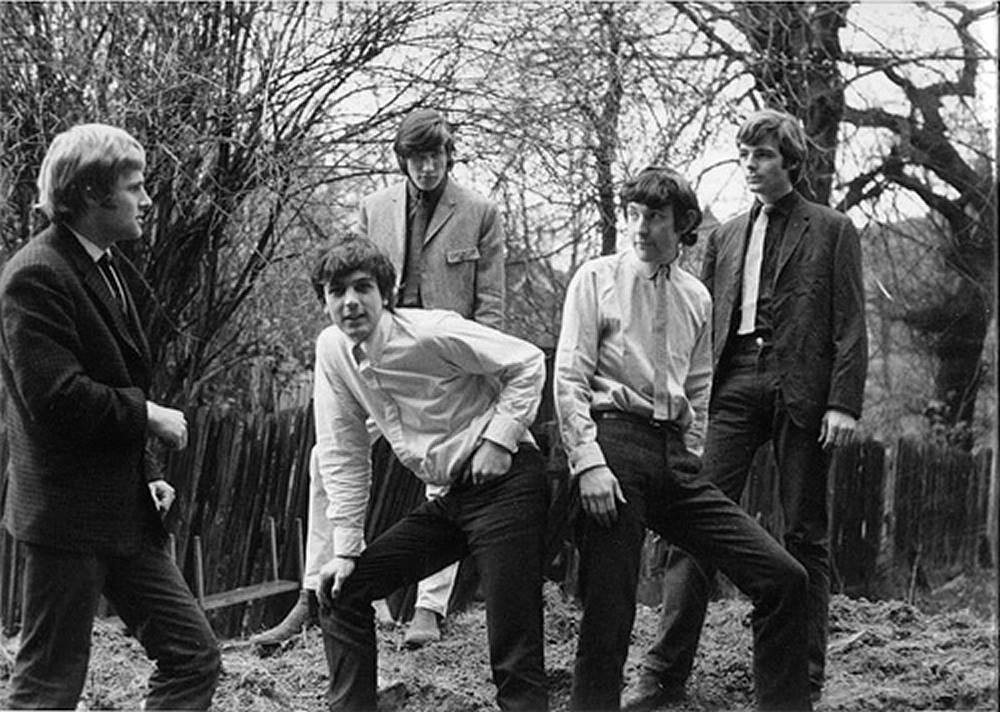
Barrett becomes Lead Singer and Richard Wright is Back
With singer Chris Dennis being sent away with the RAF, Syd was left to become an unlikely front man being an introvert and all. He could barely play guitar too. Richard Wright is also back having been on an extended holiday. Rado Bob Klose, under pressure from his parents, would go on to leave the band in the summer of 1965. With Bob gone, Rick Wright felt more free to introduce a more classical feel and, combined with Syd’s experimentation on guitar, moved the band away from the R&B sound. A very important stepping stone in the development of their sound.
The band would be very quiet for a while pursuing their studies.
August 1965

Syd Barrett and David Gilmour Arrested!
In the summer of 1965, Syd Barrett and David Gilmour experienced a memorable incident together. They travelled to the South of France, where they joined a campsite near St Tropez. During their time there, they engaged in busking in St Tropez but were arrested for their street performances. This incident reflects the early and adventurous stages of their lives before they achieved fame with Pink Floyd!
October 1965

The Tea Set Gigs
October 1965 The Tea Set band, an early version of the Pink Floyd, perform a gig at Libby and Rosie’s January’s birthday party. The Tea Set played a few gigs see them in the Pink Floyd concert database.
1964-00-00 : High Pines, Oxshott, England
1964-00-00 : Regent Street Polytechnic, London, England
1965-10-00 : Unknown, Great Shelford, England
1965-12-18 : Village Hall (Old Weston), Old Weston, England
1965-12-31 : Youth Centre (Kimbolton), Kimbolton, England
Pink Floyd/Tea Set’s original style was based on American blues and R&B, but the birth of a UK psychedelic music scene allowed them to develop Syd’s performance-based ideas into something unique. Throughout 1966 they honed their live performance skills, often developing songs into long jamming sequences, and by the end of the year Pink Floyd had become the pre-eminent ‘underground’ band. They picked up management too, and their first recordings were songs by Syd, who had established himself as the band’s creative innovator.
Timeline: 1966
15 March 1966

Pink Floyd Spontaneous Underground
March 1966 Pink Floyd play at the Marquee Club’s Spontaneous Underground event (Check out a Spare Bricks fanzine about this timeframe) and are really starting to get noticed at this point.
March 1966 also saw the founding of the London Free School, a kind of underground Citizen’s Advice Bureau and loose-knit quasi-university started by London School of Economics lecturer Peter Jenner and freelance photographer John “Hoppy” Hopkins. An eclectic group of students, activists, poets, musicians, and would-be hippies, they met informally in the basement of 26 Powis Terrace, in Notting Hill.
Peter Jenner turned up at one of the Marquee’s “Spontaneous Underground” events in early 1966, and there first witnessed The Pink Floyd Sound. Some sources–such as Watkinson and Anderson’s Crazy Diamond–claim he was at the Floyd’s first Spontaneous Underground appearance on February 27, while others–such as Vernon Fitch’s Pink Floyd Encyclopedia–place the meeting on the March 27 show. Floyd biographer Nicholas Schaffner claims it was May, though no such performance seems to have taken place. I suspect that Jenner, a leading figure on the blossoming underground scene, would have seen the Floyd early on at the Marquee, and then ‘met’ the band later–perhaps in May as Schaffner suggests.
31 October 1966

Blackhill Enterprises management company set up
Blackhill Enterprises was a rock music management company, founded as a partnership by the four original members of Pink Floyd (Syd Barrett, Nick Mason, Roger Waters and Richard Wright), with Peter Jenner and Andrew King.
Blackhill were the organisers of the first Hyde Park free concerts.
After Syd Barrett left Pink Floyd, the partnership was dissolved, and Jenner and King continued Blackhill to manage Barrett. Following Blackhill’s eventual dissolution, both Jenner and King continued to work in music management.
They also managed: Marc Bolan (who met his wife, June Child, while she was working as Blackhill’s secretary), Edgar Broughton Band, The Clash, Ian Dury, Roy Harper, Alberto Y Lost Trios Paranoias, Kevin Ayers, Bridget St John, The Action.
Picture is Pink Floyd signing their record contract at EMI in London in 1967
16 December 1966

Pink Floyd at Architects Association Gig
Architectural Association, Student Christmas Carnival
“They hired Pink Floyd to play all night for £150. The rooms and ceilings were covered with plastic sheet. It was hot and sweaty, but the music was great and the party went on all night. (December 16th 1966)” – Adam Ritchie Photography. Concert Database : Pink Floyd at Architects Association Gig
Friday 23 December 1966

UFO Club Opens in London
The UFO Club (pronounced as “U-F-O” rather than “you-foe”) was a famous part of London’s underground music scene in the 1960s. It opened on December 23, 1966, and was founded by Joe Boyd and John Hopkins, commonly known as “Hoppy.” The club became a hub for psychedelic music and culture, playing a significant role in the British counterculture of the late 1960s.
Located at 31 Tottenham Court Road, the UFO Club was known for its avant-garde and psychedelic atmosphere. The club featured light shows, avant-garde films, and performances from a variety of musicians, including some who would go on to become major figures in rock music. One of the most notable bands to regularly play at the UFO Club was Pink Floyd, then led by Syd Barrett. Their experimental music and light shows perfectly encapsulated the spirit of the club.
The UFO Club also became a meeting place for counterculture figures, attracting artists, musicians, and others involved in the psychedelic movement. However, despite its cultural significance, the club faced legal and financial difficulties. It was forced to close its doors in October 1967, less than a year after it opened. Despite its short lifespan, the UFO Club left a lasting legacy in the world of music and culture, remembered for its pioneering role in the psychedelic movement.
Friday 23 December 1966

UFO Club Opens, Pink Floyd Perform
The UFO Club was founded by John Hopkins known as “Hoppy” and Joe Boyd in the Blarney Club, an Irish dancehall in the basement of 31 Tottenham Court Road, under the Gala Berkeley Cinema which was opened on Friday 23 December 1966. Initially the club was advertised as “UFO Presents Nite Tripper”, because Boyd and Hopkins could not decide on “UFO” or “Nite Tripper” as a name. Eventually they settled on “UFO”.
Soft Machine and Pink Floyd performed on the opening night and the next Friday, and were re-engaged as the club continued into 1967, after initial success. The first events combined live music with light shows, avant garde films and slide shows, and dance troupes.
Pink Floyd would go on to play at the UFO club 12 times, twice in 1966 and 10 times in 1967. See full list of Pink Floyd concert performances at UFO Club, London. See Adam Ritchie photographs from the night.
Timeline: 1967
1967

Pink Floyd photoshoots
Gallery of Photoshoots from Pink Floyd in 1967…
1960s Pink Floyd Piano Photo Shoot
1967 Pink Floyd Park Photoshoot
1967 Pink Floyd Car Photoshoot
1967 Junk Yard Photo Shoot of Pink Floyd
1967 Cafe Photo Shoot | Pink Floyd
1967 Amsterdam Photoshoot
1966 Stripe Photo Shoot
11-12 January 1967

Pink Floyd Recording Arnold Layne
Pink Floyd record their first single Arnold Layne at Sound Techniques Studio in Chelsea. Picture is from the promo video. See photos of Pink Floyd recording sheets from their studio sessions.
17 January 1967

Pink Floyd perform at Commonwealth Institute on 17th January 1967
This handbill shows that Pink Floyd performed at the Commonwealth Institute on 17th January 1967 on Kensington High Street. There are hundreds of Pink Floyd posters in our gallery.
27th January 1967
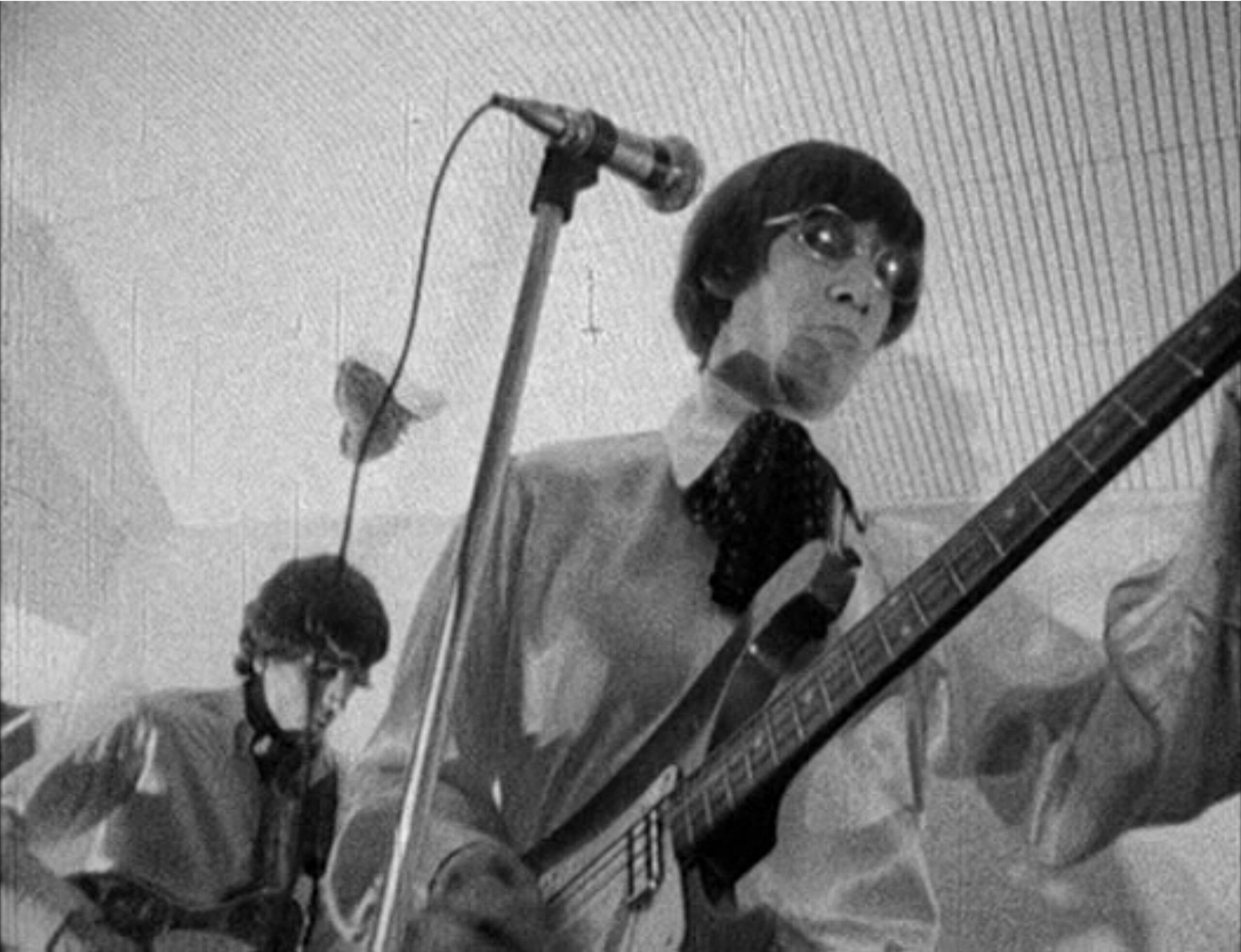
Pink Floyd perform at UFO Club
Syd Barrett and Roger Waters getting into their groove performing Pink Floyd’s psychedelic music, combining sound with light shows to give the attending audience an experience rather than just listening to songs.
1 February 1967

Pink Floyd Sign Record Contract with EMI
Pink Floyd, under management by Blackhill Enterprises, sign their record contract with EMI in London in Manchester Square offices. This was the start of a decades long working relationship. See photos from the occasion.
However, UFO Co-founder Joe Boyd had originally tried to get them signed to Polydor Records. Sidney Beecher-Stevens signed them to EMI in February 1967. Beatles engineer Normal ‘The Hurricane’ Smith would be their new producer.
3/4 February 1967

Pink Floyd and Cream at Queen’s Hall Mammoth Rave in Leeds
In 1967, Pink Floyd and Cream headlined a significant event known as the Mammoth All-Night Rave, held on February 3rd and 4th at Queen’s Hall in Leeds. This event, which took place prior to Pink Floyd’s debut album and featured Cream during their early years, was a major highlight in the music scene.
The Queen’s Hall, a former tram shed demolished in 1989, was known for hosting a variety of events including this rave, which was Pink Floyd’s first gig outside London. The rave, promising 10 hours of entertainment with go-go dancers, a fairground, a barbecue, and even a live gorilla, was a spectacular affair.
It included four stages, dancing for 10,000 fans, and 12 groups in total. The venue, also known for hosting bands like the Beatles and Joy Division, was a key site in Leeds’ music history, remembered for its vast space and rudimentary acoustics.
11 March 1967
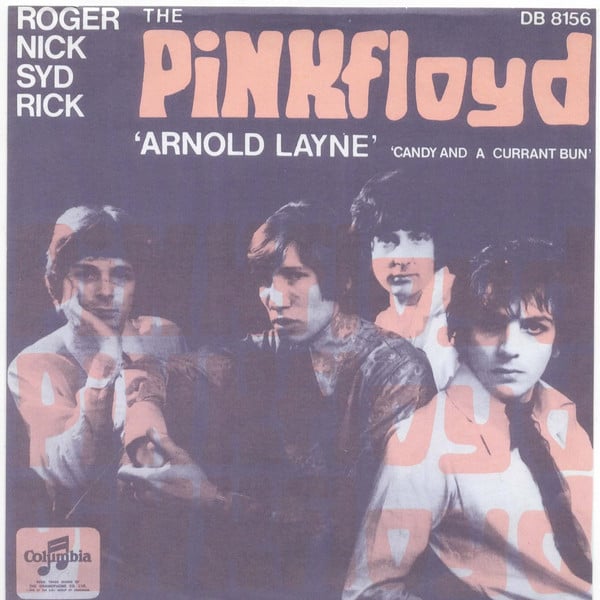
Arnold Layne First Single Released
Arnold Layne First Single Released with Candy and a Currant Bun as the B side. This was recorded before they signed to EMI with Norman Smith as producer. It was recorded at Sound Technique Studios. It was banned by Radio London for being subversive, being about cross-dressers. However, it still made it into the top 20.
22 March 1967

Pink Floyd in the Studio recording Interstellar Overdrive
Producer Norman Smith, who worked with the Beatles amongst others, had Pink Floyd at Abbey Road recording Interstellar Overdrive on 22 March 1967. See Recording Session Sheets of Pink Floyd and Syd Barrett.
March 1967

Pink Floyd 1967 Arnold Layne UK sheet Music
Reproduction of original 1967 UK sheet Music for Pink Floyd’s 1st 45rpm Arnold Layne.
1 April 1967

Chris Jagger bigs up the Pink Floyd
Mick Jagger’s brother Chris Jagger wrote an article for Disc and MUSIC ECHO. He tips then band for success and says other supports of the band are Paul McCartney, Peter Asher and Eric Clapton. [Enlarge Pic]
29-30 April 1967

Pink Floyd perform at 14 Hour Technicolor Dream Event
Pink Floyd 14 Hour Technicolour Dream Alexandra Palace London which started on the 29th April 1967 at 8pm and proceeded on through the night, meaning the Pink Floyd played on the 30th April. The event was put on as a fundraiser for the International Times, an underground counter culture newspaper.
This event firmly established Pink Floyd as a hip band.
12 May 1967

Games for May
Games for May was described as a “Space age relaxation for the climax of spring – electronic composition, colour and image projection, girls, and the Pink Floyd”. The concert featured some of the band’s early singles as well as material from their yet-to-be-released debut album – The Piper at the Gates of Dawn. During the performance, some of the band members created sound effects by chopping up wood on stage, a man dressed up as an admiral gave out daffodils, and the bubbles produced from a machine while the show was in progress stained all the furniture in the hall. As a consequence, Pink Floyd were banned from ever playing there again.
See photos from the Games for May concert
16 June 1967

See Emily Play Single Released
The second single, from the yet to be released Piper At The Gates of Dawn, is released. The album is considered to be the best psychedelic rock album that came out of 1960s Britain. Syd Barrett wrote the song following the Games for May concert, which is referenced in the lyrics. “Free games for May, See Emily Play”. It became a Summer of Love anthem and a top 10 hit for the band.
6 July 1967

Pink Floyd’s First Top of the Pops Performance
Pink Floyd’s first ever Top of the Pops TV Appearance saw them performing See Emily Play. This underground band had got themselves into the conservative mainstream on the BBC.
5 August 1967

Piper at the Gates of Dawn Released
Piper at the Gates of Dawn, Pink Floyd’s first studio album, is released. It was recorded at EMIs Abbey Road Studios whilst the Beatles were in the next studio recording Sgt Peppers Lonely Hearts club band. Who knows if Syd is on the Beatles recording!
Piper at the Gates of Dawn Lyrics
01. Astronomy Domine
02. Lucifer Sam
03. Matilda Mother
04. Flaming
05. Pow R. Toc H.
06. Take Up Thy Stethoscope and Walk
07. Interstellar Overdrive
08. The Gnome
09. Chapter 24
10. The Scarecrow
11. Bike
10th September 1967

Pink Floyd at Gyllene Cirkeln jazz club, Stockholm Sweden
Pink Floyd at Gyllene Cirkeln jazz club, Stockholm Sweden, 10.09.1967. © Lars Groth.
20+ professional photos of Pink Floyd’s performance at Gyllene Cirkeln in Sweden 1967, by photographer Kenneth Ekberg, were discovered read more…
November 1967
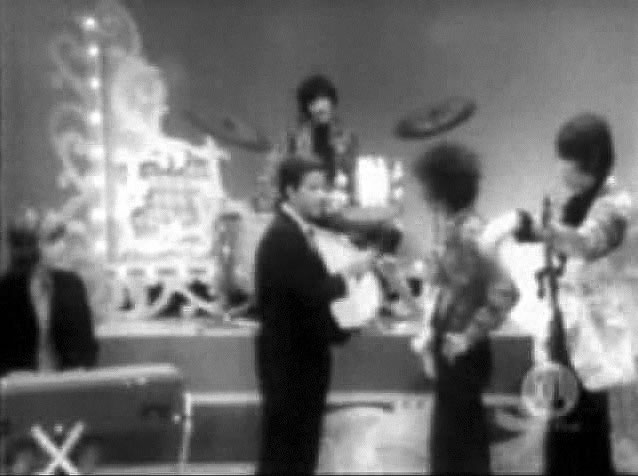
Pink Floyd in America
Pink Floyd are becoming more popular by the day and will embark on a tour of San Francisco and New York, Syd struggled on this tour with mental health and drug taking catching up with him. With the band getting into their flow with fame sweeping them up and along, this must have been quite frustrating for the band, and upsetting to see their childhood friend disintegrating. Syd was not cut out for the normal way of operating.
See Pink Floyd USA Tour Dates, Pink Floyd 6 November American Bandstand photos,
5 November 1967

Pink Floyd performs at Cheetah Club in USA
Pink Floyd perform at the Cheetah Club on 5th November 1967 as part of their North American tour,
18 December 1967

Apples and Oranges Released
Pink Floyd’s third single, Apples and Oranges, is released. This was the final song written for Pink Floyd by Syd Barrett. The B Side was Paintbox written by Richard Wright.
It was recorded shortly before the band went off to America where the song was performed on TV.
The release didn’t chart in the UK with Roger Waters suggesting the Norman Smith production of the recording was not up to scratch. Roger said, “‘Apples and Oranges’ was destroyed by the production. It’s a fucking good song”. Syd Barrett’s response to the poor charting was that he “couldn’t care less”.
Syd would be replaced shortly by David Gilmour.
22 December 1967

Christmas on Earth Continued
This all night long concert, at the Olympia Exhibition Hall in London, saw the likes of Jimi Hendrix, The Who, Pink Floyd and The Soft Machine playing on the same bill. It must have been an incredible night! There were two stages at either end of the hall with and expected 15,000 people watching the greatest pop concert in Britain.
8th December 1967
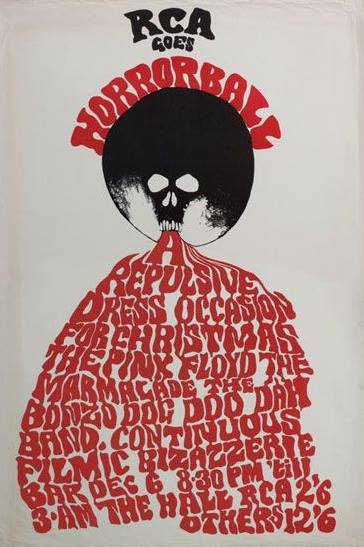
Pink Floyd at Royal College of Art. Syd Barrett Misbehaves. Again
Syd Barrett was at a very low point during this concert and left the band pondering what to do about Syd. It wouldn’t be long before he was left at home and not picked up for a concert. The rest was history.
Timeline: 1968
In early 1968 Syd Barrett’s drug taking, mental health and general behaviour became incompatible with being in a touring band. The band decided not to pick him up for their Southampton University concert. He would leave the band shortly afterwards.
12 January 1968
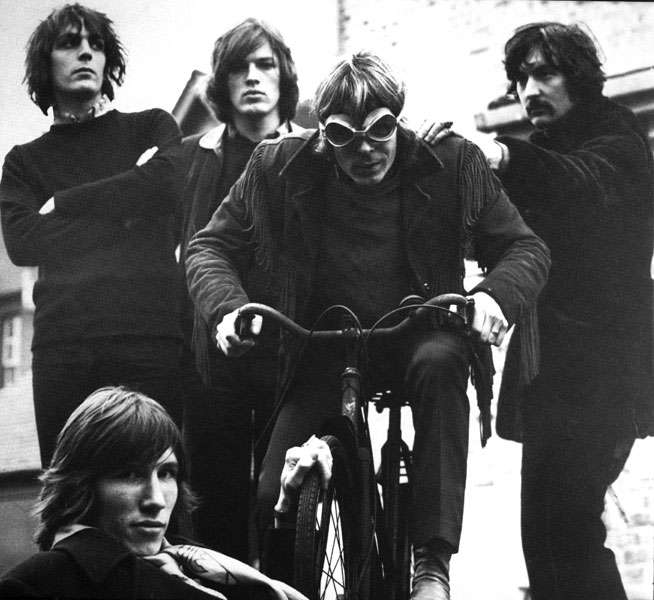
David Gilmour Joins Pink Floyd
David Gilmour was invited to help out Pink Floyd in December 1967, initially as a fifth member to support the increasingly erratic Syd Barrett. However, as Barrett’s mental health deteriorated, Gilmour gradually took over his role as the lead guitarist and vocalist. By the time Barrett left the band in early 1968, Gilmour had become a permanent member.
David Gilmour said, “My guitar style and Syd’s weren’t even close, so it was very difficult for me to know what to do, and it took me a while to settle in… I’d known Syd since I was fourteen ; it was hard dealing with replacing one of my close friends, and having to see one of my close friends no longer functioning as a normal human being.
His arrival marked a significant shift in Pink Floyd’s music and style. Gilmour’s guitar work and vocal style became integral to the band’s evolving sound, contributing to some of their most successful and critically acclaimed albums, including “The Dark Side of the Moon,” “Wish You Were Here,” and “The Wall.” many decades later.
20 January 1968

Syd Barrett’s Last Performance with Pink Floyd
Syd Barrett performed his final concert with Pink Floyd at The Pavilion Ballroom at Hastings Pier, Hastings, England. The show was introduced by Pete Drummond with Beaufords Image supporting.
26 January 1968

Pink Floyd Perform without Syd Barrett at Southampton University
Pink Floyd perform their first concert without Syd Barrett having decided not to pick him up. With David Gilmour now in the band, and Syd’s mental health, drug use and behaviour being incompatible with being in a touring band, there was no need for him to attend. Perhaps he could stay at home and write songs like Brian Wilson.
The band performed at Southampton University in the Old Refectory room of the Students Union.
April 1968

Syd Barrett Leaves Pink Floyd April 1968
Syd’s drug use and mental health challenges were not compatible with being in a busy touring pop band. Pink Floyd chose not to pick him up before a concert one day, and the rest is history.
Syd Barrett played his last ever live performance concert with Pink Floyd on 20th January 1968 in Hastings. Given Barrett was the main songwriter and main creative force of the band, it was quite a monumental decision to drop him. It was for his own good given the damage it had caused him. Syd took a break from Camberwell College of Art to pursue his interest in music with Roger Waters and the band. This was his undoing which damaged the rest of his life.
His sister Rosemary Breen did an excellent interview in 2023 about Syd and his dangerous music hobby.
The rest of the Pink Floyd timeline is work in progress. New segments of their history will be published in future so watch this space.
Links
One Fifteen Pink Floyd History
Reference Books – Inside Out A Personal History of Pink Floyd by Nick Mason, Echoes: The Complete History of Pink Floyd by Glen Povey
